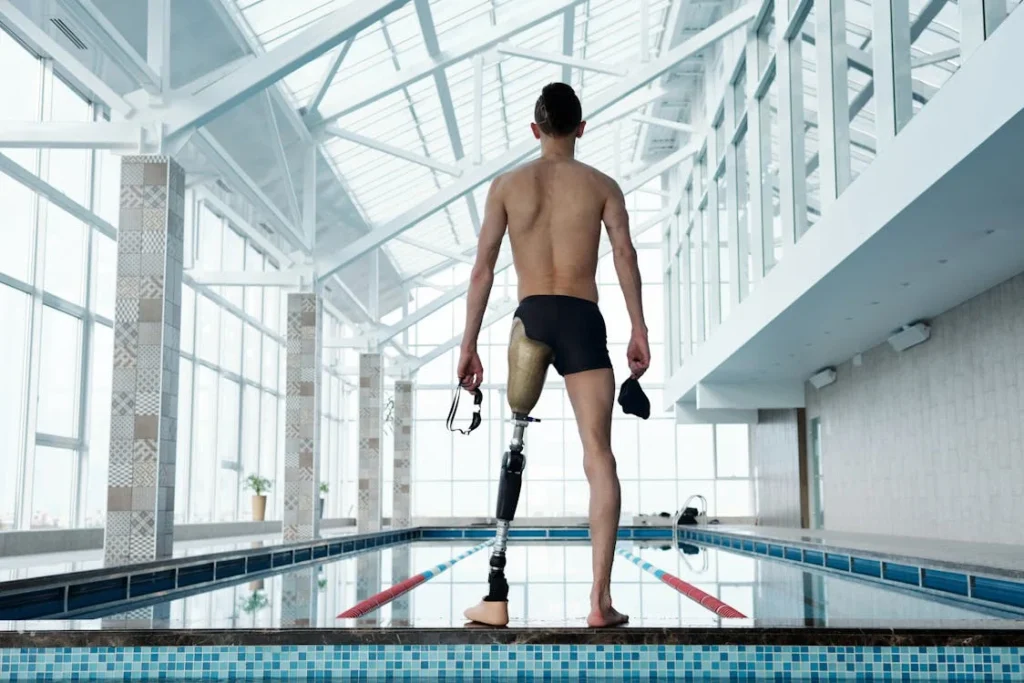For athletes with limb loss, performance starts with fit. You can have the lightest foot, the most advanced knee, or the best suspension system money can buy — but if your socket doesn’t fit right, none of it matters.
The socket is where your body meets your prosthesis. It’s the foundation. And for active amputees, especially those pushing their limits in sports or high-impact training, the socket has to do more than just feel okay. It needs to move with you, protect your skin, absorb shock, and stay locked in place without causing pressure or pain.
This is not a simple ask. Athletes place intense demands on their limbs. They sweat more. They move faster. They twist, sprint, jump, and land hard. Their needs are not the same as a casual walker’s. And their socket — the very thing that transfers every ounce of power from their body to their prosthetic limb — must rise to meet those demands.
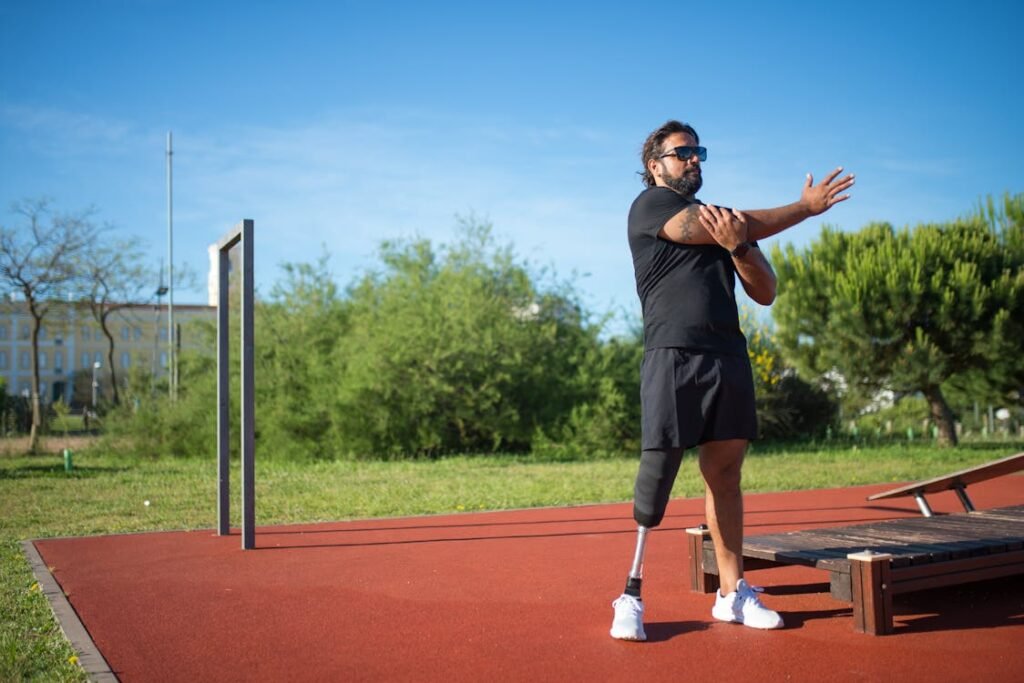
Why Socket Fit Matters More for Athletes
Movement Demands Are Higher — and Less Forgiving
Athletes put their bodies through repeated stress. Every movement is faster, harder, and more complex than what most prosthesis users experience in everyday life.
A quick change in direction, a sudden stop, or an uneven landing places a high load on the residual limb and, more importantly, the socket that holds it.
When your socket fit is off — even slightly — you feel it more during athletic activity. What may be a mild discomfort during walking becomes a sharp pain during sprinting.
A tiny area of loose contact becomes a hotspot after ten minutes of jumping. You don’t get the luxury of “breaking it in.” Performance demands precision.
For active amputees, the socket doesn’t just need to fit. It needs to hold — firmly and consistently — through the entire range of motion.
It has to accommodate swelling and muscle flexion without losing contact. It has to absorb shock while staying tight. It must allow sweat to escape while keeping grip.
This is a very different challenge than designing a socket for someone who walks slowly on even surfaces. The materials, shape, suspension, and liner all need to work together in perfect harmony.
That’s why athletes must go beyond standard fittings — because their goals go far beyond standard mobility.
Poor Fit Means Poor Performance
No matter how strong you are, how well you train, or how advanced your prosthetic components are, if your socket moves even slightly during an athletic motion, you lose power. That energy leak matters.
Instead of transferring your full muscle force into the ground through the prosthetic foot or blade, some of that force gets absorbed inside the socket by movement, slippage, or unwanted flex.
The result is less push, less drive, less control. You’ll feel slower, less stable, and less confident.
Poor fit also increases the mental load. Instead of focusing fully on your game, race, or training session, you’re distracted.
You think about whether the socket will slip. You wonder if that sore spot is getting worse. You check your gait for signs of imbalance. That split focus — even if it’s small — affects how well you perform.
Great athletes rely on rhythm, flow, and muscle memory. They don’t want to think about their equipment every second.
A well-fitting socket makes that possible. It becomes part of the body, not something you constantly have to manage. It gives you the freedom to focus fully on performance.
Unique Pressure Challenges for Active Users
Repetitive Stress Over Time
When you move more, you press more. Simple as that. Athletic activity brings more steps, more force, and more impact than walking ever does. Each step applies pressure inside the socket. And it’s not always vertical.
Lateral forces — side-to-side — are common in sports like football, tennis, or running on uneven surfaces. These forces test the socket in all directions.
What this means is that the pressure inside the socket shifts constantly. In one moment, your body is bearing full weight on the limb. In the next, it’s flying mid-air.
Then landing. Then pushing off again. The socket must be able to handle all of this without creating uneven pressure or rubbing.
A common problem among athletes is the formation of pressure sores at high-contact points. These often develop slowly, starting as redness or warmth, and progressing into deep irritation or open wounds.
The root cause is usually uneven pressure distribution or excessive movement inside the socket — both of which come back to fit.
Proper socket design for athletes requires not only a good initial mold but also adjustments based on actual movement patterns.
This is why gait analysis and feedback from training sessions are essential. You don’t know how the socket truly behaves until you put it through real-world stress.
Skin Breakdown From Heat and Moisture
Athletes sweat — a lot. And in a tightly sealed prosthetic socket, sweat has nowhere to go. It soaks the liner. It pools at the bottom. It creates friction, especially when combined with movement.
Over time, this creates one of the most common problems among active amputees: skin breakdown.
The inner environment of the socket becomes warm, moist, and abrasive — the worst possible conditions for skin. Even the best liner materials have limits.
If the socket fit doesn’t account for airflow, wick away sweat, or manage moisture, the skin will begin to suffer.
Some athletes experience skin maceration — where the skin becomes soft and white from too much moisture.
Others get rashes, fungal infections, or even open wounds. All of these problems are made worse by continuous activity.
You don’t get better by sitting down. You heal only when the friction stops — and that often means stepping away from the sport.
Preventing this begins with socket design that considers airflow and sweat management. It also includes using the right liner, the right suspension system, and perhaps most importantly, a snug but not suffocating fit.
Small design tweaks — like vent holes, textured liners, or breathable socket materials — can make a huge difference. But they only work when paired with a socket that already fits well.

Suspension Systems and Their Role in Athletic Stability
Staying Attached During High-Impact Activity
For active amputees, socket fit isn’t just about comfort — it’s about security. Athletes rely on total confidence that their prosthesis will stay in place during rapid, intense movement. This is where suspension systems become critical.
Suspension refers to the way your prosthetic socket holds onto your residual limb. A solid suspension system ensures the limb doesn’t shift, bounce, or slide during movement. For an athlete, even a small shift can disrupt balance, rhythm, or cause injury.
During sports, your body isn’t moving in just one direction. You’re twisting, pivoting, stopping and starting, sometimes all in the same second. The forces involved are sudden and unpredictable.
If your socket loses suction or your liner slips slightly inside, you’ll feel it immediately — and your body will compensate. That compensation, repeated over time, can lead to fatigue or strain in other parts of your body like your lower back or your intact leg.
An effective suspension system must be tailored to the athlete. There is no single best choice. Some athletes do well with suction suspension, where air is pushed out of the socket and a seal is created.
Others prefer mechanical systems like pin-locks, lanyards, or elevated vacuum suspension, where active suction pulls the socket tightly around the limb and maintains contact no matter the activity level.
The key is not just how strong the suspension is, but how well it works in harmony with your body’s movement. It should hold firmly without creating pressure points or reducing circulation.
When done right, a good suspension system disappears — not literally, but in the sense that you stop noticing it. It becomes part of your rhythm, your stride, your confidence.
Managing Pistoning and Limb Shift
Pistoning is a term used to describe the up-and-down movement of the residual limb inside the socket during activity. For athletes, even a few millimeters of pistoning can make a difference.
It creates delayed responses, impacts energy return, and contributes to rubbing or skin irritation.
Pistoning often happens when the suspension system isn’t strong enough or the liner allows too much give.
During walking, it might not be noticeable. But when sprinting or jumping, that movement feels more dramatic — like your leg is one step behind your intention.
This isn’t just a performance issue. Repeated pistoning causes friction and shear, two of the leading causes of skin problems among prosthesis users.
The repeated tugging at the skin, especially during sports, can quickly lead to breakdowns that sideline even the most dedicated athlete.
To reduce pistoning, the socket and suspension must create a near-perfect seal. That doesn’t mean it should feel overly tight or uncomfortable — but it must stay in place regardless of the activity. This often requires careful adjustment of liner thickness, socket shape, and suspension settings.
Some advanced systems, like elevated vacuum setups, actively remove air to maintain a tight fit with each step. These systems can offer excellent security for athletes — but they must be monitored closely.
Any loss of vacuum or change in limb shape can affect performance immediately. Regular checks, liner replacements, and alignment reviews become even more important for users depending on these systems to stay active.
Volume Fluctuations: The Hidden Challenge
The Body Changes Throughout the Day
One of the most overlooked aspects of socket fit — especially for athletes — is the natural fluctuation in limb volume. Your residual limb isn’t a static shape. It changes throughout the day depending on activity, hydration, temperature, and time spent on your feet.
After intense training or long periods of movement, the residual limb may swell slightly. This is a natural response to increased circulation and heat. The issue is, your socket doesn’t swell with you.
A socket that fit well in the morning may feel tight and uncomfortable by afternoon. That tightness may create extra pressure points or cut off circulation.
If the liner compresses unevenly, the shape and weight distribution inside the socket changes — and that affects how you move.
On the other hand, if you’ve been off your feet for a while or after cooling down, the limb may shrink slightly.
That tiny change can reduce suspension, increase pistoning, or cause unwanted movement. You might feel less secure, even if the socket is technically the right size.
This is especially frustrating for athletes because their training doesn’t happen in controlled conditions. Some days are more intense than others.
Some weather is hotter, some colder. Travel, hydration, recovery — it all affects the body. Socket fit has to be flexible enough to handle these changes without compromising performance.
Building in Adjustability Without Losing Control
To handle volume fluctuation, some athletes use prosthetic socks — thin fabric sleeves worn over the limb to adjust volume inside the socket. Adding or removing socks can help make small changes in fit as the body changes.
But this is a short-term solution. Constantly adding socks can affect alignment, create extra layers that trap heat, or alter how suspension systems work. It’s a useful tool, but not a complete fix.
The better solution is designing sockets and liners with enough adjustability built in from the start. This can include adjustable brim pressure, flexible wall sections, or modular components that can be swapped based on daily needs.
Some sockets are designed with cutouts or “windows” that allow swelling to occur without adding pressure. Others use dynamic materials that respond to body heat and pressure by softening slightly — allowing a better response to daily changes in limb volume.
For high-performance athletes, even small gains in comfort and consistency can translate to better training sessions, longer wear time, and fewer days lost to skin or pressure issues.
Understanding your body’s volume patterns, and working with a prosthetist to anticipate them, becomes a core part of long-term athletic success.
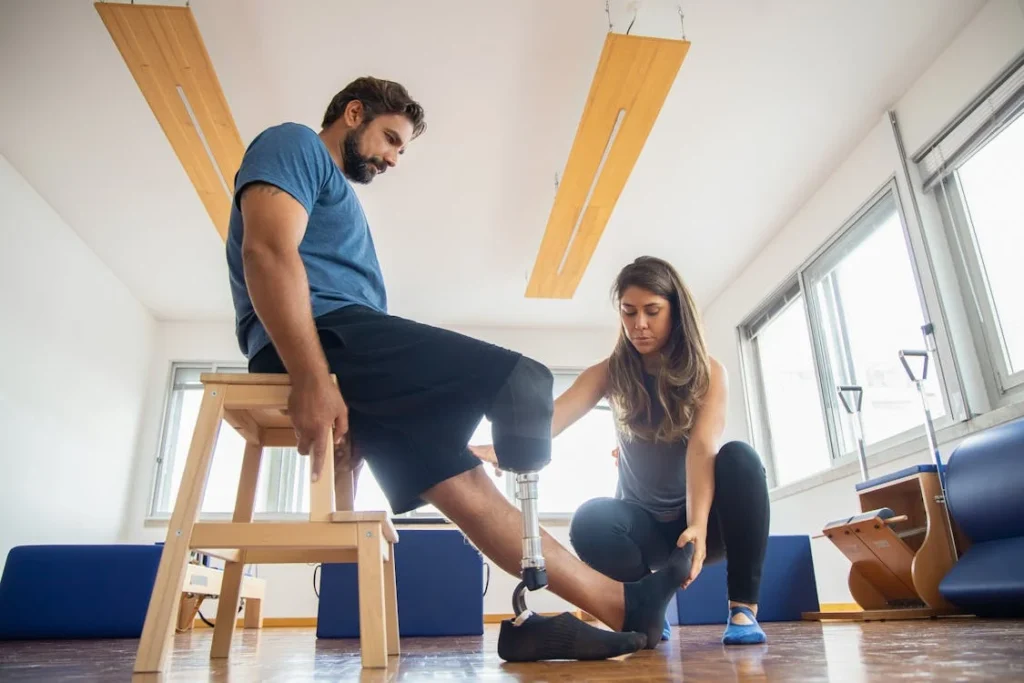
Alignment and Interface: Fine-Tuning the Athlete’s Socket
Micro-Adjustments Make Macro-Differences
For athletes, precision matters. The difference between winning and missing a goal often comes down to milliseconds or millimeters.
Socket alignment — the relationship between your residual limb, your socket, and the components below it — plays a massive role in how your prosthesis performs during movement.
If the socket is even slightly misaligned, you’ll feel it in your stride. Your foot might hit the ground at the wrong angle.
Your center of gravity may shift just enough to change how you balance. Over time, these micro-errors add up to inefficient movement, overuse injuries, and strain on the rest of your body.
Alignment is not just about how the prosthetic foot sits under the socket. It’s about how your weight is distributed throughout the socket, how your residual limb presses against the liner, and how well your body’s force is directed into the ground.
A socket that leans just a few degrees too far forward can cause overcompensation in the hips. A socket that’s too upright may reduce push-off power.
That’s why fitting an athlete’s socket isn’t a one-time procedure. It’s an ongoing process that involves constant feedback, real-world testing, and technical fine-tuning.
You may need to test it on a track, on grass, in the gym — anywhere you move. What feels good in the clinic might not hold up during sprints or fast turns.
Athletes often return for follow-up visits to adjust alignment. Not because something is wrong, but because they’ve pushed the socket to its limits and discovered ways it could work even better.
That cycle of feedback and adjustment is where high-performance prosthetics really come alive.
Interface Pressure Mapping and Gait Analysis
Technology now allows prosthetists to better understand how pressure is applied inside the socket during movement. Tools like pressure mapping systems show exactly where force is concentrated during walking, running, or jumping.
These maps can reveal problem areas, asymmetry, or poor load distribution that the athlete may not be able to articulate.
This is especially helpful for fine-tuning the interface — the way your skin, liner, and socket work together. If a specific part of the limb is under too much pressure, small modifications can be made.
Perhaps a different liner material will help. Maybe a socket trim line needs adjustment. Maybe a slight alignment tweak will relieve the issue.
Gait analysis can also detect subtleties that aren’t obvious in static fitting. A slight limp, a delay in push-off, or imbalance between legs may be corrected not with training, but with better socket fit.
The goal is always the same: natural, fluid, confident movement.
This data-driven approach is especially valuable for competitive athletes. It removes guesswork and helps create a more dialed-in prosthesis that responds perfectly to your unique mechanics.
But even for recreational athletes or fitness enthusiasts, pressure analysis and gait feedback can unlock comfort and stability that transform the experience of movement.
Socket Materials: Balancing Rigidity and Flexibility
Structural Support With Adaptive Comfort
Materials play a big role in how a socket feels and performs. For athletes, the ideal socket must offer a strong, stable base — one that holds up under intense activity — but still have enough flexibility to move with the body.
Rigid sockets made from carbon fiber or high-density thermoplastics are often used for high-impact sports because they transfer force efficiently.
They don’t bend or absorb much energy, which means more of your power goes into the ground. But this stiffness can also lead to discomfort if the socket doesn’t match your limb exactly.
To counter this, some athletes benefit from hybrid sockets. These designs use a rigid outer shell for structure and a softer inner socket or flexible insert for comfort.
The softer layer conforms to the body, helps reduce pressure points, and allows minor limb volume changes without sacrificing fit.
Flexible wall designs are also becoming more common. These allow certain parts of the socket to flex slightly with movement while keeping the rest of the socket firm.
For example, the brim might give a little during sitting or squatting, while the midsection stays solid during running.
This combination of rigidity and forgiveness is crucial for athletes. It means the socket doesn’t fight against natural movement but works with the body to support it.
The better the material blend, the more time you can spend training — not recovering from discomfort.
Weight and Responsiveness
Socket material also affects overall prosthesis weight. Athletes need light limbs for speed and agility. A heavy socket can slow you down, throw off your rhythm, and make you tire faster.
But lighter isn’t always better if it means sacrificing durability or support.
That’s why high-performance sockets often use advanced composites. These materials offer strength without bulk.
They resist cracking, hold their shape under pressure, and feel more responsive during motion. When you push off the ground, you want that energy to come back cleanly — not get lost in a soft or wobbly interface.
Responsiveness isn’t just about the foot or blade. It starts at the socket. If the socket flexes or shifts under load, your power gets lost before it ever reaches the ground.
A well-built, properly aligned socket gives you a solid platform to explode from. That kind of control — the kind you can rely on with every jump, sprint, or turn — builds trust in your limb.
And trust, for an athlete, is everything.
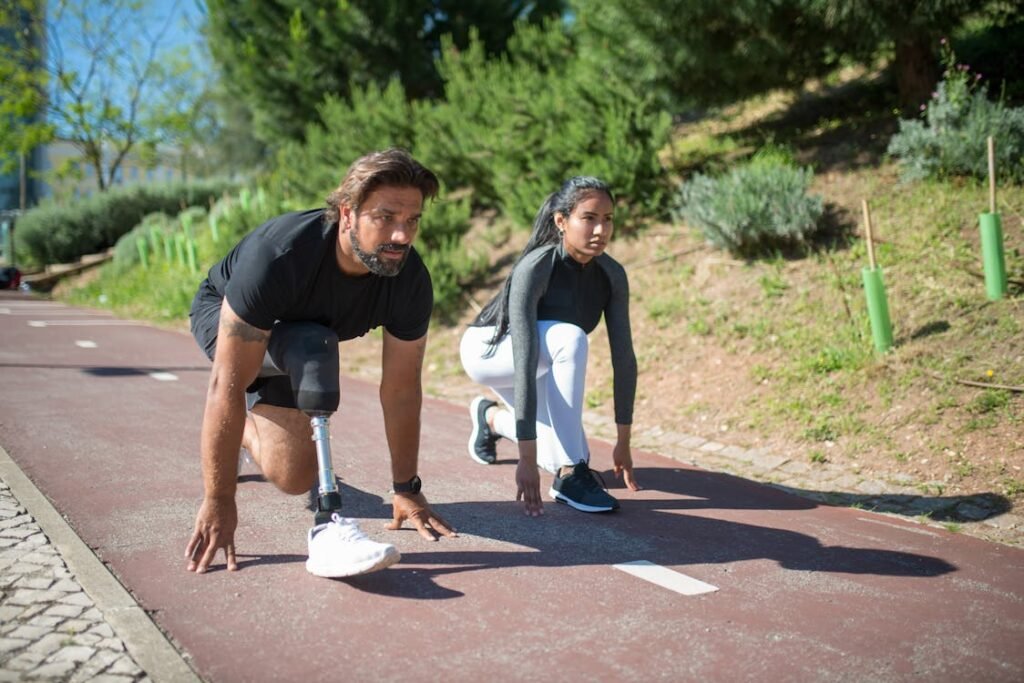
Training With a New Socket: The Break-In Period
Why Athletes Need Time to Adapt
Even with a perfectly designed socket, there is no instant fit — especially for athletes. A new socket needs to be worn, tested, stressed, and understood by the body.
The break-in period isn’t just a physical process; it’s a neurological one. Your brain and muscles need time to adjust to the way the socket fits, how it shifts under load, and how it responds to real-world motion.
During this phase, athletes may experience minor discomforts, slight imbalances, or unexpected movements. These aren’t signs of failure — they’re signals.
The body is learning the new system, and the socket is revealing how it behaves under athletic pressure.
Some athletes try to rush through this stage, jumping straight into training or competition with a new setup. But that can backfire. High-impact activity too soon can cause skin irritation, swelling, or joint strain.
It’s better to gradually build up wear time, increasing the intensity of activity in steps. Start with walking, then add jogging, agility drills, and finally sport-specific movements.
This progressive approach allows the athlete to note how the socket behaves under different loads and speeds. It also gives the prosthetist a chance to make small refinements — perhaps adjusting pressure areas, realigning the socket, or modifying liner options.
These small tweaks can make a major difference in how confident and pain-free the athlete feels.
Listening to the Body During Break-In
One of the biggest challenges during the break-in phase is knowing what’s normal and what’s not. Some soreness is expected as the limb adapts to new pressure zones.
However, sharp pain, skin breakdown, or consistent instability are red flags. These issues should be addressed immediately.
Pushing through discomfort in sports can be a sign of mental strength, but when it comes to a new socket, pushing too hard can delay progress or cause setbacks.
Athletes should stay in close contact with their prosthetist during this period. Notes, photos of the skin, videos of movement — all of these can help make quick and effective adjustments.
And because athletic bodies tend to change shape — more muscle here, a little swelling there — the socket may require multiple rounds of fine-tuning to hit the perfect fit.
Trusting the process is key. The goal isn’t just to get back on the field. It’s to come back stronger, with a socket that empowers peak performance and supports long-term health.
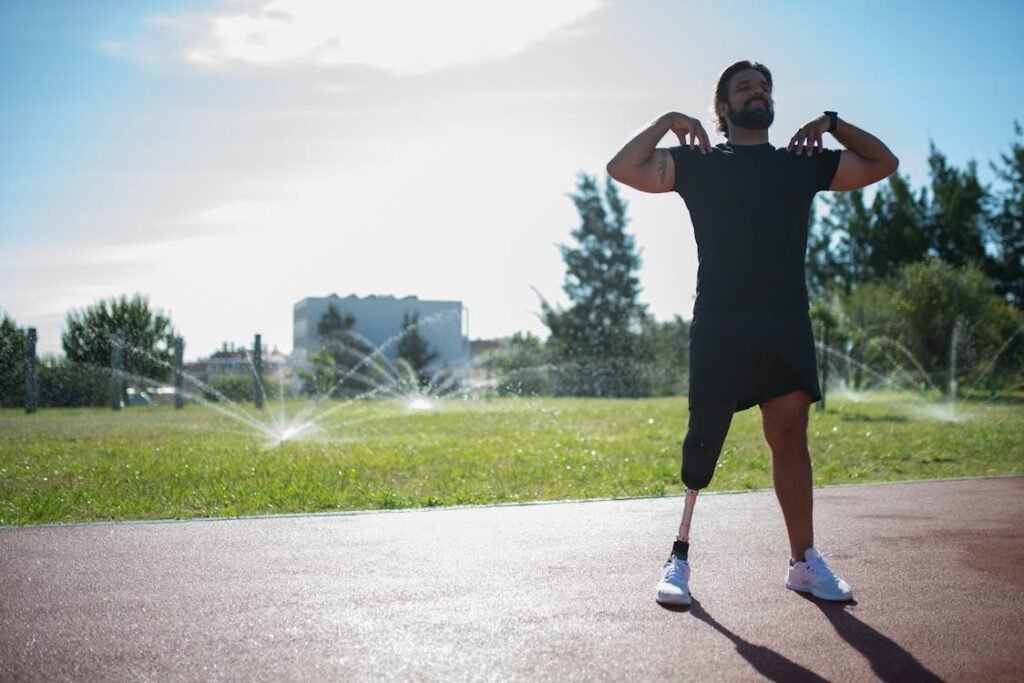
Psychological Confidence Starts With Physical Security
When the Fit Feels Right, the Mind Follows
Many athletes say the same thing once they find their perfect fit: “I forget it’s even there.” That’s the goal — not just physical comfort, but psychological freedom.
A socket that fits perfectly allows you to focus entirely on your sport. You’re not second-guessing your limb. You’re not distracted by pain. You’re in the moment, fully present, fully capable.
On the other hand, an ill-fitting socket takes up mental space. You worry about slipping. You feel the pinch every time you land. You brace for discomfort with every sprint.
Even a slight sense of insecurity can take the edge off your performance, especially in high-pressure environments.
This is why physical stability is tied so closely to confidence. Athletes thrive when they feel in control. And control begins with knowing that your body — and every part of your equipment — will respond exactly as you need it to.
Prosthetic fit can make or break that sense of control. When the socket is secure, responsive, and pain-free, it sends a message to the brain: you’ve got this.
That confidence spreads to every part of your performance. You push harder. You move more naturally. You stop holding back.
Competing Without Hesitation
For athletes, hesitation is the enemy. That split-second pause before you jump, that doubt before a turn — it can cost time, points, or even lead to injury.
Poor socket fit creates hesitation. Maybe it’s due to past injuries. Maybe it’s the memory of slipping during a match or the sting of an old pressure sore flaring up.
But when the socket is dialed in — when it hugs your limb perfectly, responds to movement, and holds up under pressure — that hesitation fades. You move with trust, knowing your equipment won’t hold you back.
This trust doesn’t happen overnight. It’s earned over time. Through testing. Through honest feedback. Through slow gains and careful adjustments.
But once it’s there, it transforms performance. The socket isn’t just a piece of gear anymore — it’s part of your body.
Recovery and Long-Term Maintenance
Fit Isn’t Static — It Evolves
One mistake athletes often make is assuming a great fit today will stay great forever. But your body changes. Your training evolves.
Muscle gains, weight loss, hydration levels, age — they all affect your limb shape and volume over time.
This means socket fit is never a “set it and forget it” solution. It must be monitored and adjusted as your body adapts. Small changes in limb shape can have large effects on pressure distribution, suspension, and comfort.
Regular check-ins with your prosthetist are vital. Even if nothing feels “wrong,” a quick review can catch small issues before they become big ones.
Pressure mapping, gait analysis, and liner assessment can all reveal silent problems that haven’t yet caused pain — but could limit performance in the future.
Just like athletes train, hydrate, and recover smartly, socket maintenance should be part of the long-term routine. Keeping your socket in top shape is part of staying in top shape.
Post-Training Care and Socket Hygiene
Athletes sweat more, train harder, and often wear their sockets longer each day. That means keeping the socket clean is non-negotiable.
Sweat trapped in the liner or socket can lead to bacterial buildup, skin irritation, and odor. Over time, it may even degrade the liner material itself.
Daily cleaning with gentle soap and water, proper drying, and regular inspection for wear and tear go a long way in preserving both comfort and health.
And just like your shoes or sports gear, your socket and liner have a lifespan. They need to be replaced or refurbished when signs of fatigue begin to show.
Think of your socket as a piece of performance equipment — because that’s exactly what it is. It deserves the same attention and care as your training shoes, your diet, or your recovery routine. That mindset makes a difference not just in how long the socket lasts, but how well you perform while wearing it.
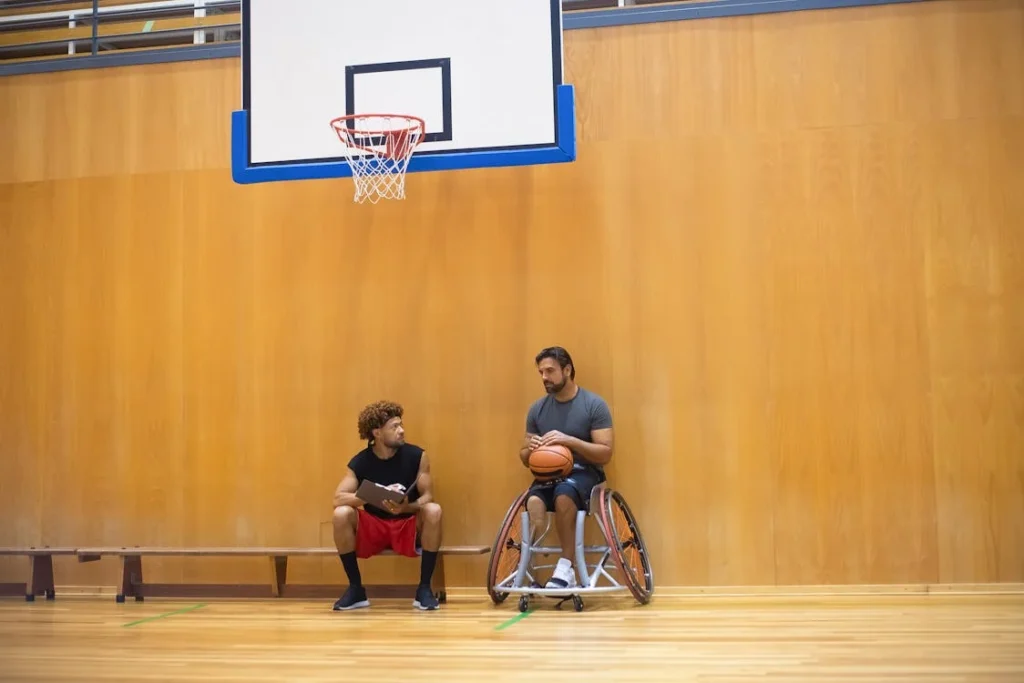
The Athlete-Prosthetist Partnership: Key to Long-Term Success
Fit Is a Dialogue, Not a One-Time Decision
Behind every high-performing athletic prosthesis is an ongoing partnership — between the athlete and the prosthetist.
Getting the socket right is not about walking into a clinic, sitting for a few measurements, and walking out with a perfect fit. It’s a journey. One that requires patience, trust, and communication.
As an athlete, you know your body better than anyone. You know how it feels when something’s off — when your push-off feels weaker, when your skin burns mid-run, or when something isn’t syncing during a pivot.
Those insights are priceless. The best prosthetists don’t just build sockets — they listen. They watch you move, they hear your feedback, and they adapt the design accordingly.
Too often, active users are told to just “tough it out” or “give it time.” While some adaptation is natural, pain, instability, and insecurity should never be the norm.
You shouldn’t have to settle for good enough — not when your goals demand more.
That’s why long-term success comes from honest conversations, frequent check-ins, and mutual respect.
A prosthetist who understands the unique pressures of athletic movement will be your biggest asset in pushing the limits — safely, confidently, and comfortably.
Conclusion
For athletes with limb loss, socket fit is not just about wearing a prosthesis — it’s about unleashing performance. The right fit gives you confidence. It gives you control. It lets you move the way you want, without pain, without fear, and without limits.
Achieving that fit takes more than a good mold. It takes knowledge of your sport, understanding of your body’s demands, and a commitment to refinement. It means working closely with your prosthetist, listening to your body, and never settling for less than full potential.
Because at the highest level of competition — or even in your personal best — every step matters. And every step starts with the socket.
When your socket fits right, the game changes. And so do you.



